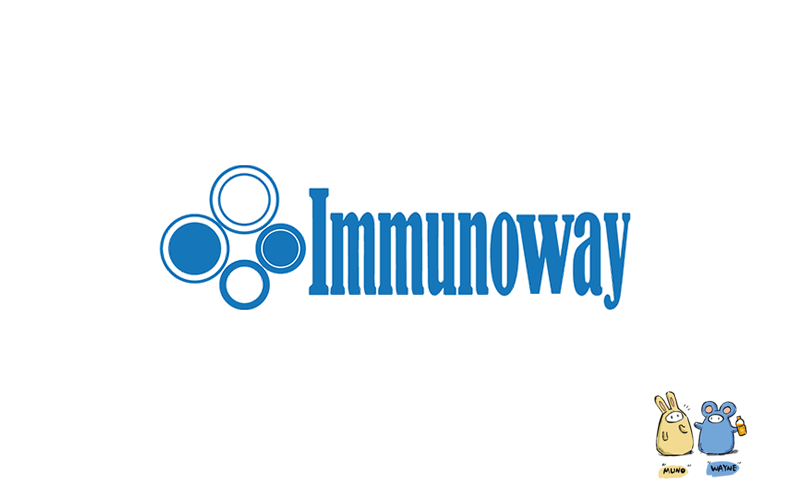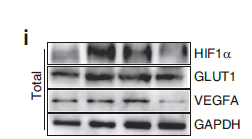
主要信息
Target
EGLN2
Host Species
Rabbit
Reactivity
Human, Mouse, Rat
Applications
WB
MW
45kD (Calculated)
Conjugate/Modification
Unmodified

货号: YN6277
规格
价格
货期
数量
200μL
¥3,780.00
现货
0
100μL
¥2,300.00
现货
0
40μL
¥960.00
现货
0
加入购物车


已收藏


收藏
详细信息
推荐稀释比
WB 1:500-2000
组成
Liquid in PBS containing 50% glycerol, 0.5% BSA and 0.02% sodium azide.
特异性
This antibody detects endogenous levels of PHD1 at Human, Mouse,Rat
纯化工艺
The antibody was affinity-purified from rabbit antiserum by affinity-chromatography using epitope-specific immunogen.
储存
-15°C to -25°C/1 year(Do not lower than -25°C)
浓度
1 mg/ml
理论分子量
45kD
修饰
Unmodified
克隆性
Polyclonal
同种型
IgG
相关产品
抗原&靶点信息
免疫原:
Synthesized peptide derived from human PHD1
展开内容
特异性:
This antibody detects endogenous levels of PHD1 at Human, Mouse,Rat
展开内容
基因名称:
EGLN2 EIT6
展开内容
蛋白名称:
Egl nine homolog 2 (Estrogen-induced tag 6) (HPH-3) (Hypoxia-inducible factor prolyl hydroxylase 1) (HIF-PH1) (HIF-prolyl hydroxylase 1) (HPH-1) (Prolyl hydroxylase domain-containing protein 1) (PHD1)
展开内容
功能:
Prolyl hydroxylase that mediates hydroxylation of proline residues in target proteins, such as ATF4, IKBKB, CEP192 and HIF1A . Target proteins are preferentially recognized via a LXXLAP motif . Cellular oxygen sensor that catalyzes, under normoxic conditions, the post-translational formation of 4-hydroxyproline in hypoxia-inducible factor (HIF) alpha proteins . Hydroxylates a specific proline found in each of the oxygen-dependent degradation (ODD) domains (N-terminal, NODD, and C-terminal, CODD) of HIF1A . Also hydroxylates HIF2A . Has a preference for the CODD site for both HIF1A and HIF2A . Hydroxylated HIFs are then targeted for proteasomal degradation via the von Hippel-Lindau ubiquitination complex . Under hypoxic conditions, the hydroxylation reaction is attenuated allowing HIFs to escape degradation resulting in their translocation to the nucleus, heterodimerization with HIF1B, and increased expression of hypoxy-inducible genes . EGLN2 is involved in regulating hypoxia tolerance and apoptosis in cardiac and skeletal muscle . Also regulates susceptibility to normoxic oxidative neuronal death . Links oxygen sensing to cell cycle and primary cilia formation by hydroxylating the critical centrosome component CEP192 which promotes its ubiquitination and subsequent proteasomal degradation . Hydroxylates IKBKB, mediating NF-kappa-B activation in hypoxic conditions . Also mediates hydroxylation of ATF4, leading to decreased protein stability of ATF4 (By similarity).
展开内容
细胞定位:
Nucleus .
展开内容
组织表达:
Expressed in adult and fetal heart, brain, liver, lung, skeletal muscle, and kidney. Also expressed in testis and placenta. Highest levels in adult brain, placenta, lung, kidney, and testis. Expressed in hormone responsive tissues, including normal and cancerous mammary, ovarian and prostate epithelium.
展开内容
信号通路
文献引用({{totalcount}})
货号: YN6277
规格
价格
货期
数量
200μL
¥3,780.00
现货
0
100μL
¥2,300.00
现货
0
40μL
¥960.00
现货
0
加入购物车


已收藏


收藏
Recently Viewed Products
Clear allToggle night Mode
{{pinfoXq.title || ''}}
Catalog: {{pinfoXq.catalog || ''}}
Filter:
All
{{item.name}}
{{pinfo.title}}
-{{pinfo.catalog}}
主要信息
Target
{{pinfo.target}}
Reactivity
{{pinfo.react}}
Applications
{{pinfo.applicat}}
Conjugate/Modification
{{pinfo.coupling}}/{{pinfo.modific}}
MW (kDa)
{{pinfo.mwcalc}}
Host Species
{{pinfo.hostspec}}
Isotype
{{pinfo.isotype}}
产品 {{index}}/{{pcount}}
上一个产品
下一个产品
{{pvTitle}}
滚轮缩放图片
{{pvDescr}}




















